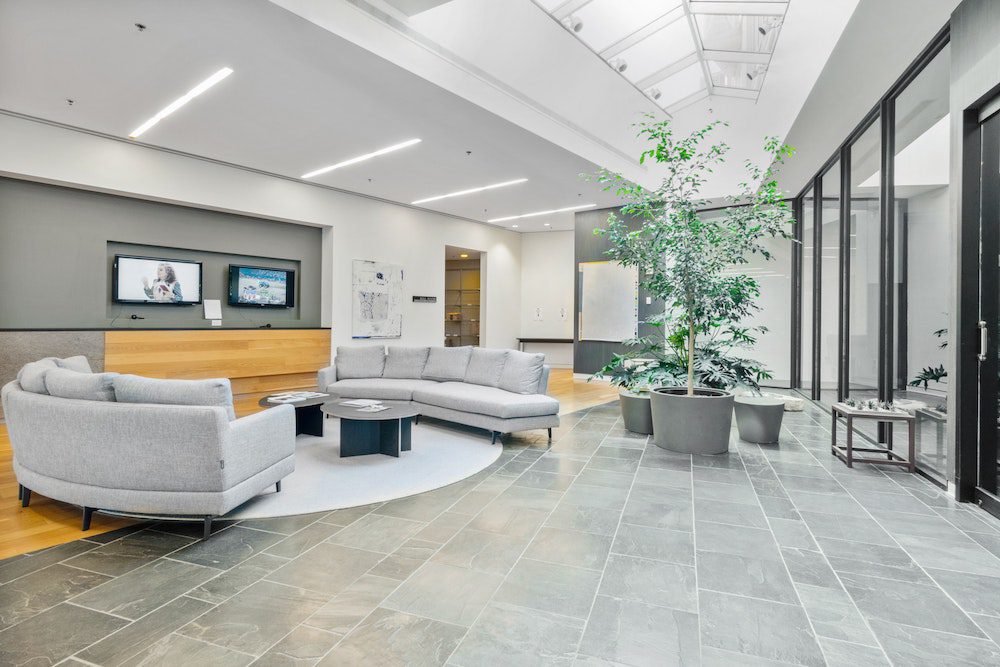Optimizing your resume is vital when applying for a job, asking for a raise, or seeking a promotion. Obviously, factors like your education and experience play a role. However, it’s also true for the hard skills you possess, such as the specific knowledge and skills required to perform well at a job.
However, increasingly, soft skills are playing a significant role.
“93% of employers say soft skills play a critical role in their decision about whom they want to hire,” says Ian Siegel, co-founder and CEO of ZipRecruiter. “Those soft skills include showing up on time, willingness to learn, enthusiasm, and a can-do attitude. So when you don’t have work experience to sell, remember that you can still sell yourself.”
The term “soft skills” encompasses a wide range of abilities. However, due to people working in very different situations, hybrid situations, communication is very high on the list right now. ZipRecruiter listed communication as the most in-demand soft skill that employers are looking for. This was followed by customer service, scheduling, time management, project management, analytical thinking, and the ability to work independently.
But what exactly are soft skills? How does time management fit into the concept of “soft skills?” And, in what ways does it allow you to thrive at work?
Well, let’s answer those questions, and more, in the following article.
What are soft skills?
Often, time management is referred to as a soft skill. But what does that mean exactly? Essentially, a soft skill is a desirable trait for employers.
The soft skills you possess determine your work style and your interaction with your co-workers. The difference between hard skills and soft skills is that hard skills are technical and job-specific. In contrast, soft skills relate to professionalism, timeliness, and other essential, intangible qualities that complement the practical skills required for the job, making you an attractive candidate.
Although these skills are crucial to success at work and in your personal life, many people never learn them. Some of the most common soft skills include:
- communication;
- collaboration;
- emotional Intelligence;
- analytical and problem-solving skills;
- creativity;
- adaptability and flexibility;
- leadership;
- learning agility;
- stress management;
- ownership; and
- attention to detail.
As people have gained access to colleges and technical schools, they have developed more advanced hard skills. Yet, despite this, many people lack the soft skills necessary to succeed. And again, the importance of technical or skilled skills cannot be overstated. For example, skills like coding, marketing, or speaking another language will definitely give you an edge.
However, if you have no interpersonal skills or have difficulty managing your work ethic, you will have a tough time succeeding. It is even possible that you could lose your job.
Due to this, soft skills are more important than you may realize. So do not underplay or disregard them during an interview or ask for a raise or promotion. Instead, ensure that potential employers know you are efficient, effective, and able to work with others.
Why is time management considered a soft skill?
Managing time effectively is a soft skill because it cannot be taught in a formal classroom setting. Instead, it requires practice and experience to develop.
But, more specifically, time management is considered a soft skill for the following reasons.
- Regardless of your profession, it applies to you. Managing your time effectively is important regardless of your industry or position. In fact, unlike hard skills specific to certain industries, time management is a universal skill set.
- You can transfer it. In addition to the previous point, soft skills can be applied to any career path. Their use is versatile and can be adapted to many different positions and settings.
- It’s teachable. Although not traditionally taught in a classroom, soft skills like time management can be taught. Most accomplish this through training, coaching, workshops, and external mentoring.
- Success requires it. As a soft skill, time management is crucial to success. Without time management, you will have difficulty meeting deadlines, completing tasks, and achieving your goals.
- Soft skills strengthen workplace relationships. The last thing anyone wants to work with is someone who never meets deadlines or disrespects their time. Unfortunately, it is possible to disrupt your co-workers and make life difficult for everyone in your workplace without time management skills. The result can be friction between your co-workers.
- It’s a life skill. The ability to manage time is not only useful at work. Your personal life can benefit from this as well. Whether completing daily chores, setting and keeping appointments, going to the gym, or spending time with family and friends, time management is an integral part of our lives. Intentionally managing your time will help you make better decisions and maintain a successful work-life balance.
Why is time management an important soft skill?
With a better understanding of soft skills, let’s look at the importance of time management at work.
- It makes your work experience more enjoyable. You are more likely to deliver a high-quality end product on time (or before) when operating at your highest level. In turn, this boosts your confidence, motivation, and engagement.
- Goal-setting becomes easier. By setting smarter goals, it will be easier for you to track and achieve them.
- Provides more opportunities. By being proficient in the basics of your job, you will have more opportunities for training, career growth, promotions, and mentoring in the workplace. In addition, when you learn how to manage your time efficiently, you can gain additional skills that can last your entire career and increase your competitiveness.
- You can make better decisions. Planning your day strategically and prioritizing the most important tasks first is the key to making wise, practical time management decisions. You will become more productive as you develop this habit and think more creatively and critically about your tasks.
- You’ll be able to avoid stress and burnout. Allocating specific time windows for being most productive is a critical element of time management. You’ll be less stressed when you utilize these time frames and get your work done efficiently. For example, when you block out time for your priorities, you can avoid waiting until the last minute or letting distractions interrupt your workflow.
- More personal time. A satisfying work-life balance is something we all strive for. Nevertheless, finding that balance can be difficult when your work and home to-do lists are overwhelming. We can regain our freedom by managing our time well off the clock. We won’t work odd or long hours if we have a deadline. Managing our time allows us to relax, refresh, and reset.
Types of Time Management Skills
While not an extensive list, here are some of the most essential types of time management skills you should consider developing.
Prioritizing
You may be unable to complete every task you are asked to do. And, that’s alright — despite your desire to do everything at once.
You must prioritize your tasks to accomplish what matters most in a logical order. Among the factors to consider when assigning priority are:
- the timeframe for each task;
- estimated timeframe;
- the ways it might be necessary to others in the organization;
- the consequences of not completing the task;
- the possibility that a task could be interrupted by a bottleneck; and
- whether it could it be delegated or outsourced to someone else.
Scheduling
Some tasks must be accomplished at specific times, so scheduling is essential. Schedules affect the flow of your day, your week, your month, and the workflow of others. Due to energy levels and demands of the day, most people are more or less productive at specific times of the day.
Keeping a schedule can also help you avoid procrastination. For example, let’s say that you need to return an important phone call. If it’s not scheduled, you may keep putting it off by saying, “I’ll get around to it.” As a consequence, you never make this important phone call.
Moreover, a schedule ensures you never miss deadlines or meetings. And, it’s pretty handy in breaking larger tasks into more manageable pieces.
Task Management
You can prevent forgetting important tasks by keeping a to-do list (properly prioritized) and integrating it into your schedule. In addition, they help you avoid spending all day thinking about your to-do list.
Keeping track of your tasks takes energy, and having to contend with everything that needs to be done throughout the week can be a burden. Keep a daily list of all the tasks you need to accomplish, and you won’t be overwhelmed. Focus on one task at a time.
How you decide to manage your tasks is totally up to you. Some prefer to create daily, weekly, and monthly to-do lists. Others, however, may for techniques like batching, where you arrange your tasks in similar groups—for example, setting aside specific time blocks for email management or scheduling meetings only on Tuesdays.
Workload Management
Even though it may seem odd, pacing your work is a crucial time management skill. Working long hours or skipping breaks may improve productivity in the short term, but you will lose productivity in the long run due to exhaustion. Unless there is an emergency, it is important not to overwork. Your schedule should include necessary breaks and a reasonable end time.
Also, you can avoid burnout by knowing and implementing an optimum workload for yourself.
Minimizing Distractions
When you learn how to manage your time, you can avoid distractions. Experts recommend that you avoid distractions during work hours, such as emails, texts, and social media.
Doing this will allow you to keep your focus and utilize your time efficiently. When working, it can be tempting to let people interrupt you or let your laziness get in the way. For your schedule to run smoothly, though, you must remain focused and organized.
You should be in control of your work time as well. For instance, you should not waste time looking at irrelevant work materials on the web.
Do not lose focus. After all, there’s a reason that you set goals. You will achieve your goals much more quickly if you focus your efforts appropriately.
Delegation
It may be possible for you to delegate some tasks, depending on your line of work. As such, you need to know when to delegate and what to delegate.
At the same time, many people are reluctant to delegate, either because of their desire for control or to save money by not hiring assistants or employees. In the end, both approaches reduce productivity and increase costs.
Despite diligent time management, you may be trying to do too much if you still can’t accomplish everything on your to-do list. Remember, rather than failing at many tasks; it is better to succeed at a few of them.
How to Improve Your Time Management Skills
Are you interested in improving your time management skills? To solve this problem, you can do a few things.
Keeping a time log is a good place to start. As a result, you can audit where your time is currently being spent. Additionally, this can help you discover when you’re most productive and when you’re wasting time.
In the words of psychotherapist and writer Nathaniel Branden, “The first step toward change is awareness.”
After that, you need to be deliberate. After all, time management doesn’t just magically happen. It also involves the following.
- Setting small blocks of intention, like 30-minutes on an activity that brings you closer to reaching a goal.
- Use techniques like the Eisenhower Matrix to determine what your priorities are.
- Evaluating time-wasters, such as the time spent in your inbox.
- Get comfortable with saying “no” when you’ve packed your calendar.
- Building a conducive work environment by keeping it clean and organized.
- Fight back against procrastination by scheduling your most important tasks when you’re most productive.
- Add white space to your calendar instead of scheduling every minute of your day, like blank spaces for emergencies.
- Assessing your schedule regularly. Doing so will help you prepare and ensure your time is spent wisely.
- Tracking the progress of your goals to hold yourself accountable.
In Conclusion
There’s no denying that we’re living in an era of change in the workplace.
Because of that, soft skills are in high demand. More and more employers recognize the importance of soft skills for employee morale and productivity. Having the right opportunities and the right environment can help you develop soft skills.
Because of this, time management is a soft skill that can enhance your career.
Why Is Time Management Considered a Soft Skill? was originally published on Calendar by John Rampton. Featured Image Credit: Ono Kosuki; Pexels. Thank you!










